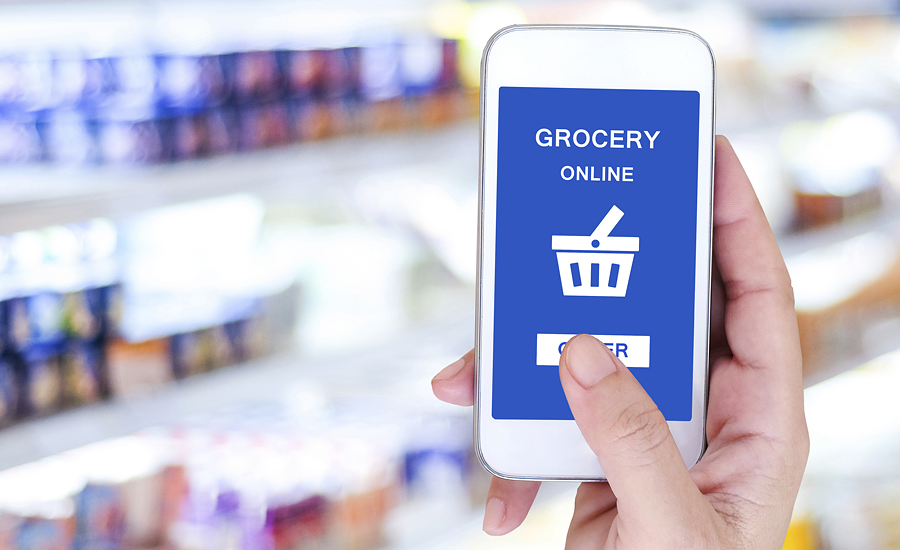Total grocery sales are projected to climb from under 5% at the end of 2017 to over 8% by the end of 2022, according to Brick Meets Click, Barrington, Ill. From a compound annual growth rate (CAGR) perspective, online grocery sales will grow 13% as compared to 1.3% for in-store sales (excluding the effects of inflation).
Brick Meets Click developed a forecasting model that incorporates market, competitor and shopper elements from its grocery insights platform Grocery IP. All departments sold by brick-and-mortar grocers across fresh and packaged goods are included in the scope of this forecast; pharmacy is excluded.
The framework for modeling online grocery growth is based on key drivers like accessibility, attractiveness and acceptability, as well as a market structure that clusters online providers into two competitive sets.
Market structure matters
It’s no longer good enough to analyze online grocery sales as one uniform format. Consumers essentially have two online alternatives to shopping in the physical store—pure-play (which utilize ship-to-home via common carrier) and in-market providers (which have physical stores or other facilities in close proximity to shoppers and fulfill via delivery and/or pick-up methods).
Companies can operate in both types, however, the appeal of each type is distinct as to the needs and problems associated with the in-store experience.
Accessibility is already high
The size of the potential consumer segment at the end of 2017 includes over 250 million adults in the United States, based on the percentage of the population that uses the internet.
Today, 100% of this consumer segment can buy groceries from a pure-play provider. Likewise, market and shopper insights show that nearly 80% of consumers are able to shop at least one in-market provider.
Not only can a large majority of consumers shop from an in-market provider, but most consumers also have several in-market options. For instance, the Top 50 U.S. metro areas, which account for 55% of the nation’s population, already have 10 in-market competitors on average.
Online sales growth will benefit as more consumers go online, but this only equates to another 5% of the adult population over the next 5 years.
Attractiveness varies considerably
Online grocery shopping isn’t for everyone. In fact, the general appeal of this alternative is attractive to less than half of potential shoppers, based on anyone who has ever bought groceries online before.
Pure-play’s most prominent proposition revolves around getting the products that consumers want. Collectively, providers are selling grocery-related products to approximately 10% of potential shoppers based on past 30-day purchase activity.
In-market’s consumer value centers on saving time related to shopping the physical store. These providers play a larger role relative to grocery shopping, and typically include 30 or more SKUs, with sales per order twice as large and perishables present in nearly every basket. In aggregate, in-market providers are shopped by closer to 15% based on the same measures.
Acceptability still has room to improve
Online shopping promises to improve shopper outcomes in various ways, however, consumers are still learning how to buy this way and providers are still improving the ways they sell online.
For example:
- One in five online shoppers can’t find everything they want to buy. In-market performance trails pure-play providers in this area, but that’s likely because in-market basket sizes are considerably larger.
- What’s worse is when a customer puts an item in the cart, checks out and expects to receive everything ordered only to find out something is out of stock. Reducing the difference between what’s ordered and what’s received is critical, especially for in-market providers.
- Other factors also affect shopper satisfaction, including the direct and explicit cost related to using online shopping options.


